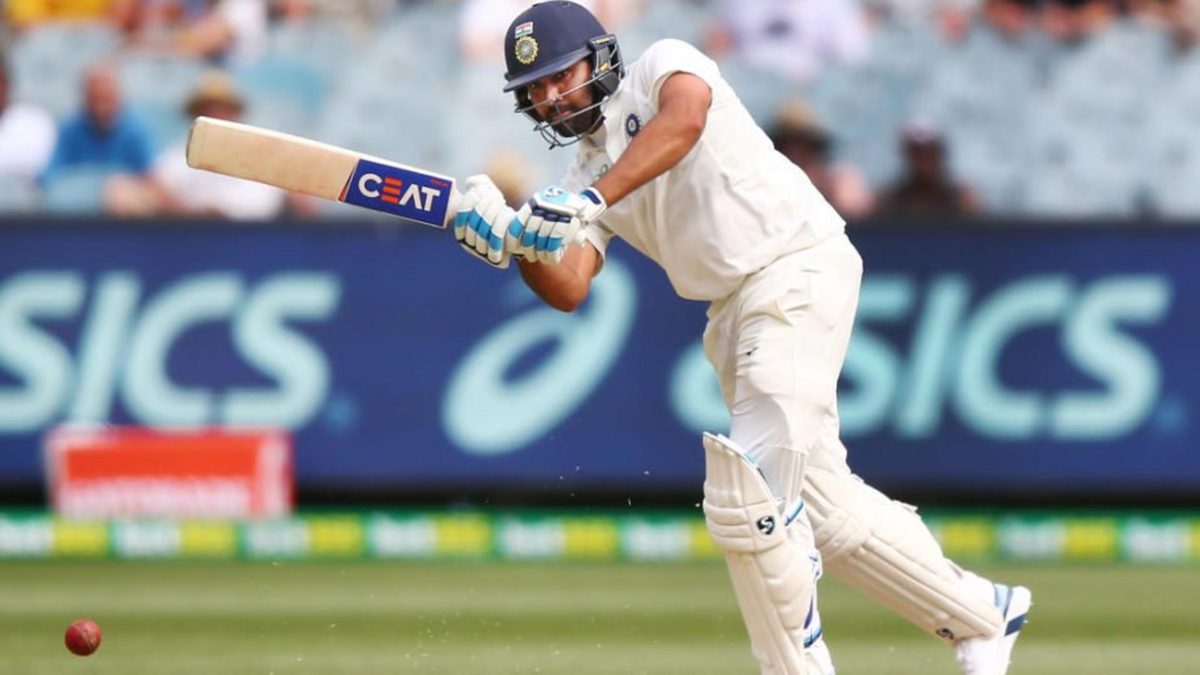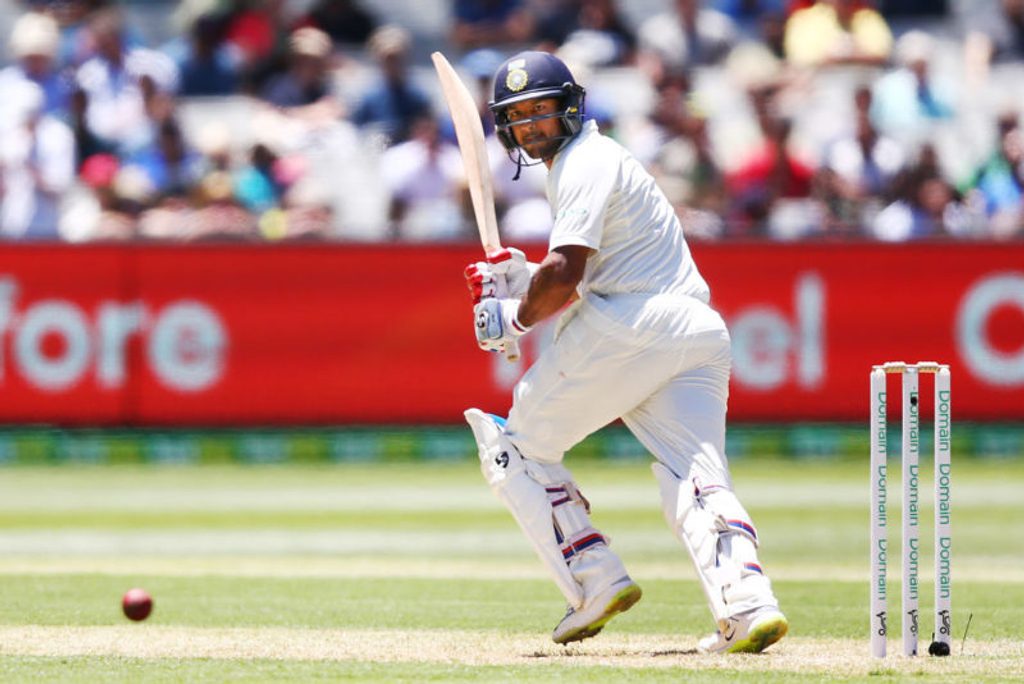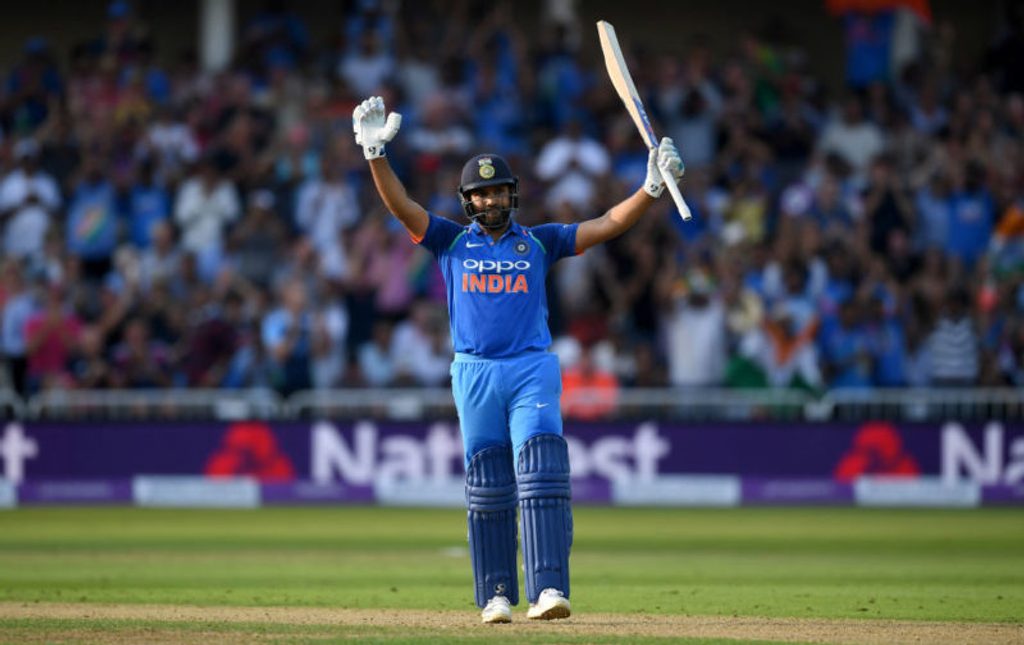
Amidst the hoopla that surrounded India’s team selection for this Test match, the return of Rohit Sharma to the side went relatively unnoticed.
On day one, much of the spotlight was on India’s fresh new opening pair of Mayank Agarwal and Hanuma Vihari, the former making his debut, the latter playing just his third Test. On a poor MCG pitch that outraged the cricketing Twitterati, the pair made significant contributions – Agarwal impressed with a half-century, while Vihari’s 66-ball vigil for eight runs was to make life much easier for Cheteshwar Pujara and Virat Kohli.
[caption id=”attachment_93333″ align=”alignnone” width=”800″] Mayank Agarwal impressed on debut with 76[/caption]
Mayank Agarwal impressed on debut with 76[/caption]
Despite the success of Agarwal and Vihari, it remained curious to see why Sharma was not sent in to cure India’s top-order woes. It was in 2013 that MS Dhoni moved the fluent right-hander up to open in ODI cricket for an extended period, granting him a license to thrill. A mediocre career in coloured-clothing was to be transformed, and the last five years have seen Sharma establish himself as one of the great limited-overs openers. And yet, in what seems quite a puzzling train of thought from the Indian selection think-tank, the 31-year old has never been granted the opportunity to bat at the top of the order in the longest format.
The stop-start nature of Sharma’s Test career – guilty of injuries, losses of form, and India’s constant rotation policy – have meant that 26 matches and five years on from his debut, he has failed to make a great impression in whites. His first innings of the series in Adelaide saw him display the wicked abundance of his talent. An aerial drive over cover for six off of Pat Cummins filled you with wonder as to why his Test numbers remain so poor in comparison to his batting colleagues. His dismissal in that same knock – a needless and poorly-timed slog of off Nathan Lyon to deep square-leg when on 37, highlighted his continuing struggle to transfer his limited-overs ruthlessness to the Test arena. A back injury meant that he would have to wait for redemption until after the second Test.
[caption id=”attachment_93334″ align=”alignnone” width=”800″] Sharma has yet to transfer his destructive ability in ODIs to Test cricket[/caption]
Sharma has yet to transfer his destructive ability in ODIs to Test cricket[/caption]
Ignored as an opening option, Sharma’s arrival at the crease came on day two after the losses of Pujara and Kohli, their 170-run partnership running the Australians ragged. It was a time as good as any to get some runs, yet a hint of uneven bounce – the centurion Pujara was bowled through the gate by one that stayed low from Cummins – ensured that the task was not an easy one.
Perhaps one of the great hallmarks of Sharma’s batsmanship is the stillness he retains at the crease, right till the point of contact between bat and ball. A pull-shot across the ground from Josh Hazlewood for four was picturesque, worthy of donning the front cover of a coaching manual.
Lyon proved to be a tricky customer after tea, and a tame sweep offered substitute fielder Peter Siddle the simplest of chances at short fine-leg. Fortunately for Sharma, his ill-discipline wasn’t to be punished, as the Victorian seamer failed to take hold of the top-edge.
Rohit Sharma posts his second Test fifty on Aussie soil!#AUSvIND | @Domaincomau pic.twitter.com/A3bXwPAqtO
— cricket.com.au (@cricketcomau) December 27, 2018
The Australians were left ruing their error – Cummins was treated to a flashing cut, while Hazlewood was guided with control to the third-man boundary with a delicate drop of the hands. A stinging cover-drive from Mitchell Starc – the quick flow of his hands rather remarkable – capped off a fine display against Australia’s pace triumvirate.
With India declaring on 443-7, Sharma finished unbeaten on 63, his first Test half-century outside of Asia since 2015. Much remains to be learnt about Sharma as a Test batsman, and while this was a brilliant flourishing of the bat in the middle-order, he must surely be offered the chance to face the fresh new ball at some point. With the way this match is progressing, India could be in search of quick runs in their second innings. Such an opportunity would be ripe for Sharma’s power.
[breakout id=”0″][/breakout]For now, Sharma’s knock should be applauded, ensuring that the runs of Pujara and Kohli were not to go in vain. India’s near two-day battle with the bat has all but ensured that they will depart for Sydney with a series victory still on the cards. And while his potential for destruction at the top of the order remains ignored, Sharma remains a pleasure to watch, regardless of where he wields his blade.








